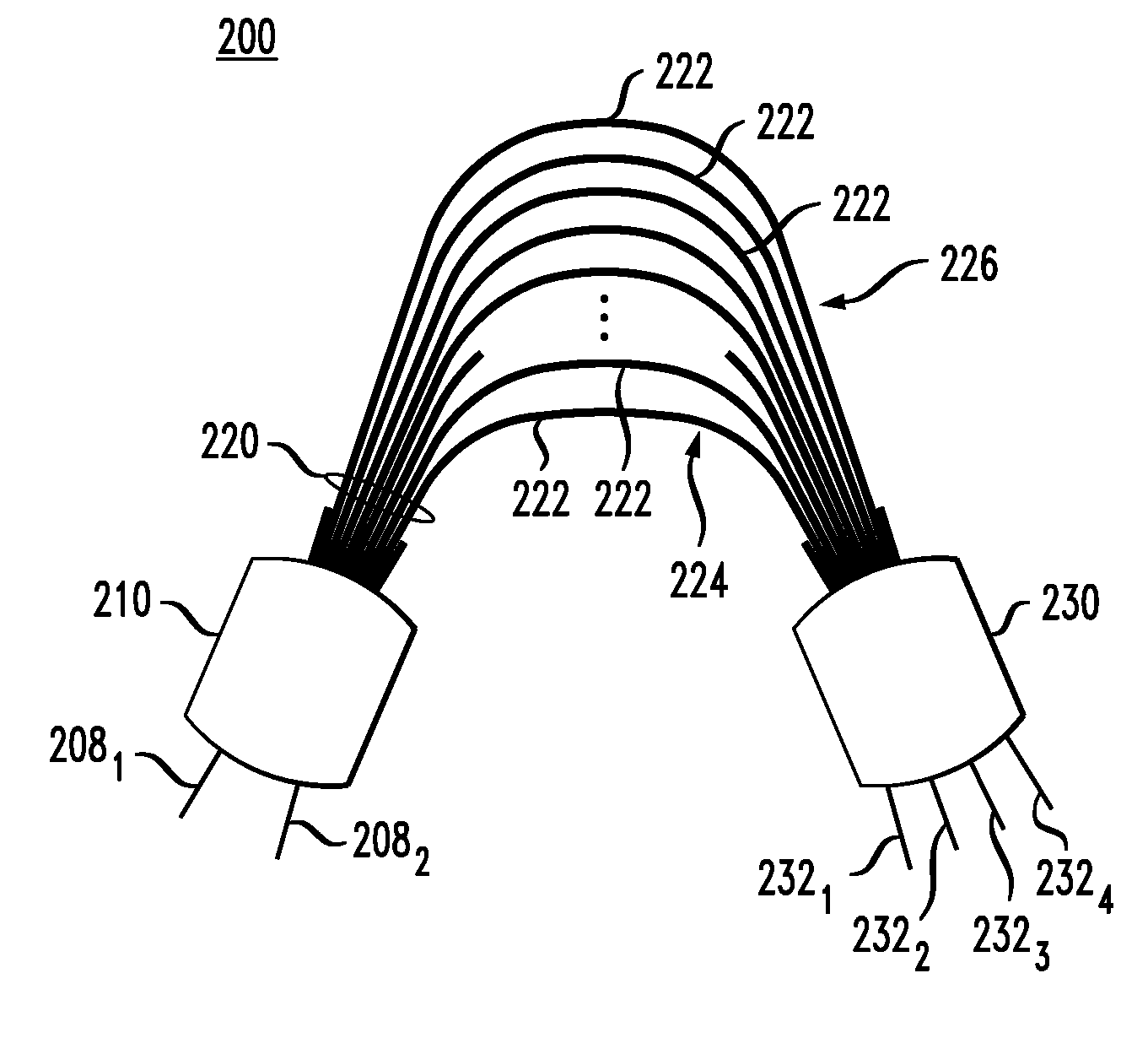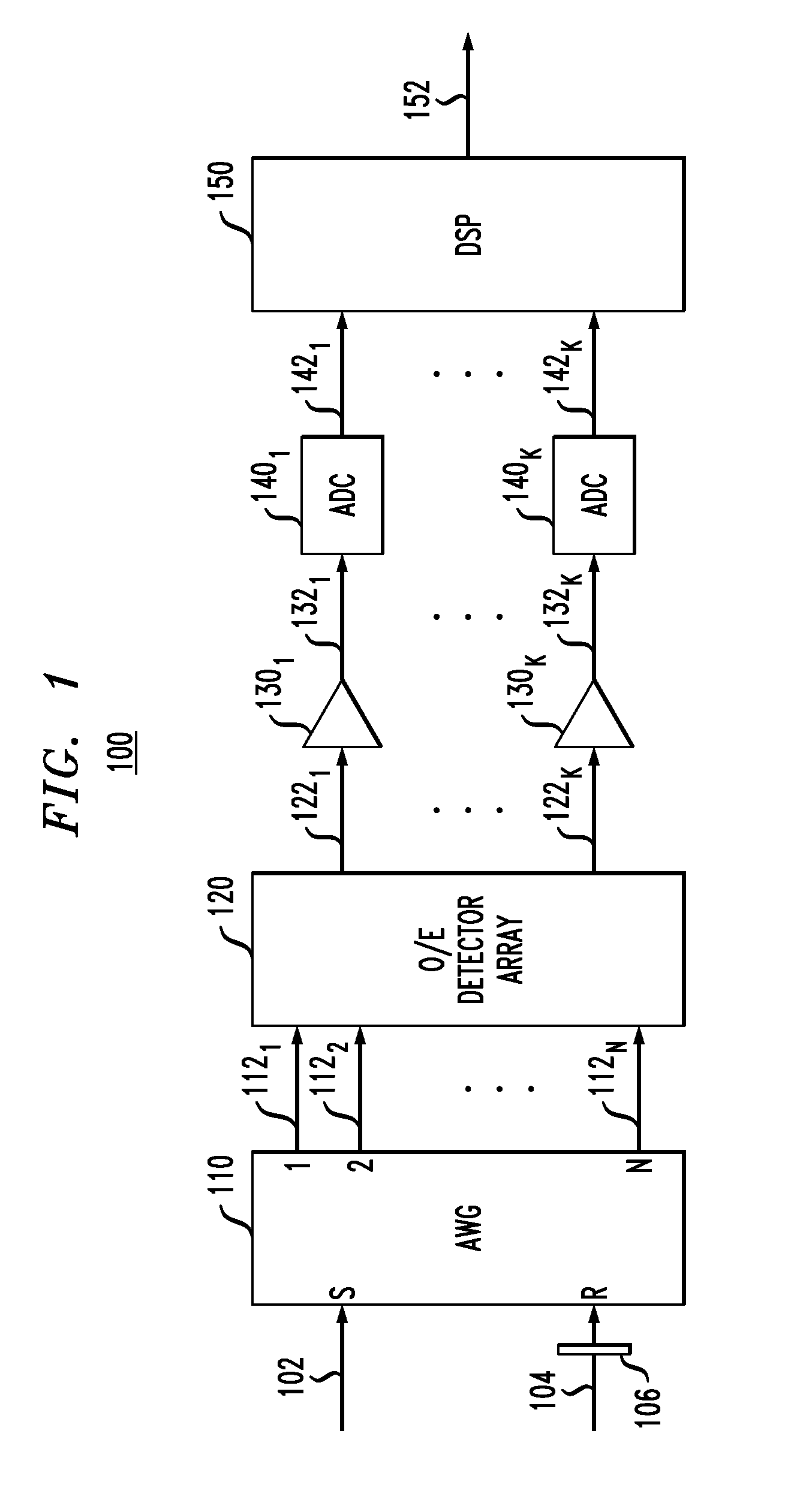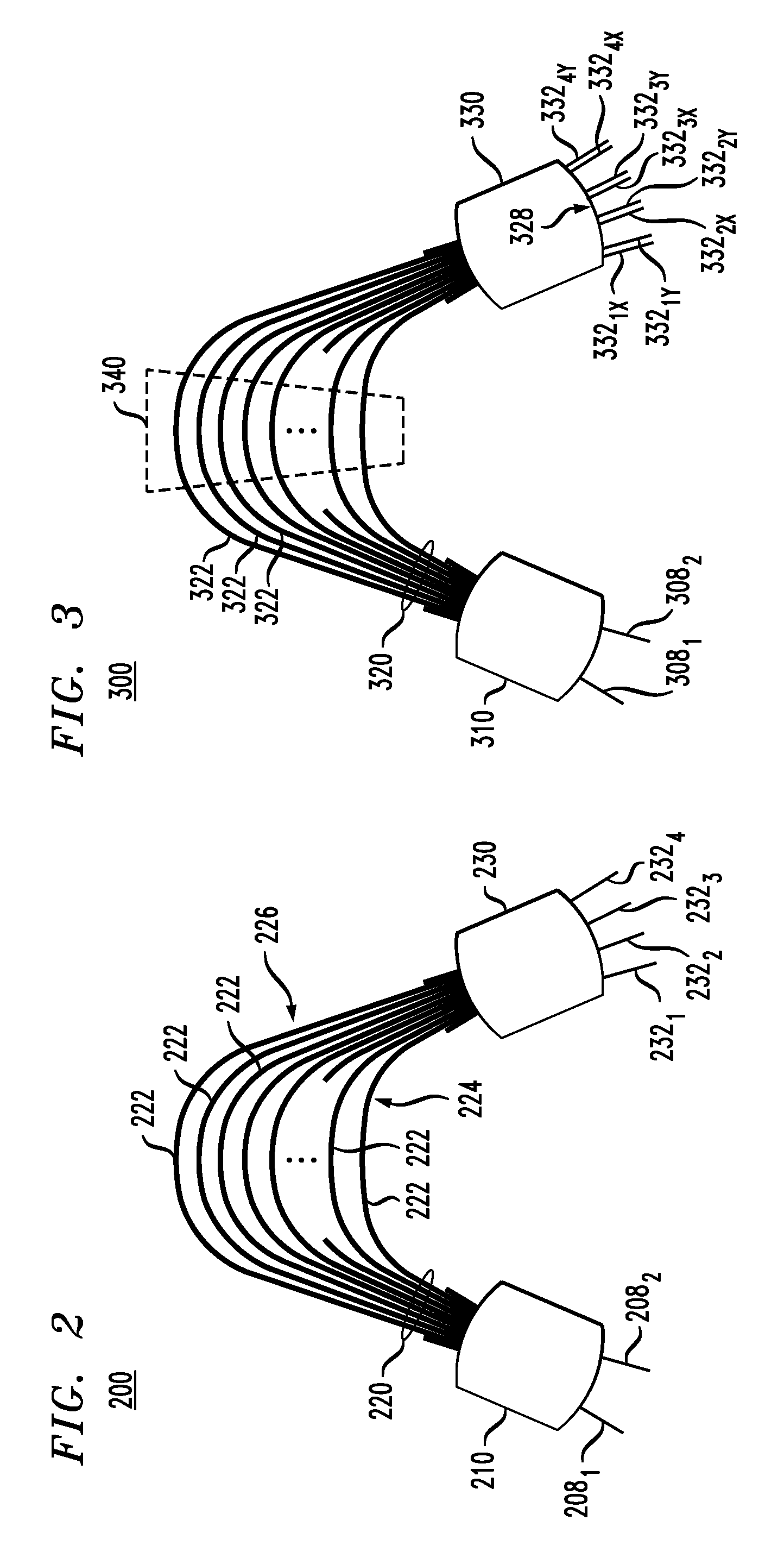Coherent receiver having an interleave-chirped arrayed waveguide grating
a receiver and waveguide technology, applied in the field of optical communication equipment, can solve the problems of relatively large corresponding receivers, and relatively high optical attenuation
- Summary
- Abstract
- Description
- Claims
- Application Information
AI Technical Summary
Benefits of technology
Problems solved by technology
Method used
Image
Examples
Embodiment Construction
[0016]FIG. 1 shows a block-diagram of a coherent optical receiver 100 according to one embodiment of the invention. Receiver 100 has an arrayed waveguide grating (AWG) 110 having (i) two input ports labeled S and R and (ii) a plurality of output ports labeled 1 through N. AWG 110 optically mixes input signals 102 and 104 applied to input ports S and R, respectively, to generate N mixed signals 1121-112N at output ports 1 through N, respectively. In various embodiments, input signal 102 can be a non-multiplexed signal or a multiplexed signal that has wavelength-division-multiplexed (WDM) and / or polarization-division multiplexed (PDM) signal components. Depending on the intended type of input signal 102, AWG 110 can be designed to perform the functions of: (i) a 90-degree hybrid; (ii) a wavelength demultiplexer and a 90-degree hybrid for each WDM component; (iii) a polarization demultiplexer and a 90-degree hybrid for each PDM component; or (iv) a wavelength demultiplexer, a polarizat...
PUM
 Login to View More
Login to View More Abstract
Description
Claims
Application Information
 Login to View More
Login to View More - R&D
- Intellectual Property
- Life Sciences
- Materials
- Tech Scout
- Unparalleled Data Quality
- Higher Quality Content
- 60% Fewer Hallucinations
Browse by: Latest US Patents, China's latest patents, Technical Efficacy Thesaurus, Application Domain, Technology Topic, Popular Technical Reports.
© 2025 PatSnap. All rights reserved.Legal|Privacy policy|Modern Slavery Act Transparency Statement|Sitemap|About US| Contact US: help@patsnap.com



